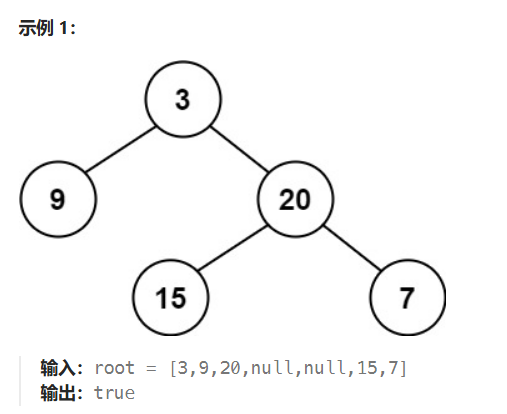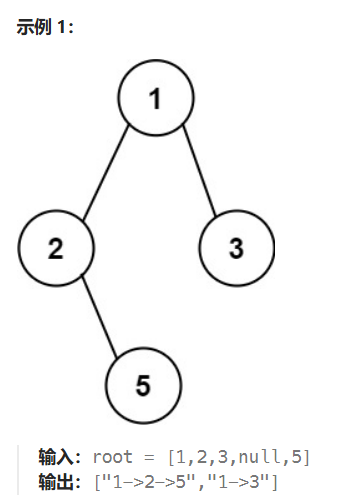树
2024年9月18日大约 4 分钟
树
leetcode刷树笔记
二叉树定义:
public class TreeNode {
int val;
TreeNode left;
TreeNode right;
public TreeNode() {
}
public TreeNode(int node) {
this.val = node;
}
public TreeNode(int node, TreeNode left, TreeNode right) {
this.val = node;
this.left = left;
this.right = right;
}
}递归知识相关
- 删除中用到的
return self.trimBST(root.right, low, high)和root = self.trimBST(root.right, low, high)的区别
是一个是跳出结束了当轮的循环,一个是继续当前轮次循环,但是都是把当前节点root替换为了self.trimBST(root.right, low, high)。
搜索二叉树
二叉树的搜索算法主要可以分为两种,一种是BFS,一种是DFS。
- DFS
即深度优先算法,分为前中后序,一般可采用递归,或者迭代方法(栈)实现,现在给出DFS迭代的java模板:
前序
public List<Integer> preorderTraversal(TreeNode root) {
List<Integer> list = new ArrayList<>();
if (root == null) {
return list;
};
Stack<TreeNode> stack = new Stack<>();
stack.push(root);
while (!stack.isEmpty()) {
TreeNode node = stack.pop();
list.add(node.val);
if (node.right != null) {
stack.push(node.right);
};
if (node.left != null) {
stack.push(node.left);
}
}
return list;
}中序
public List<Integer> inorderTraversal(TreeNode root) {
ArrayList<Integer> list = new ArrayList<>();
if (root == null) {
return list;
}
Stack<TreeNode> stack = new Stack<>();
while (root != null || !stack.isEmpty()) {
if (root != null) {
stack.push(root);
root = root.left;
}else{
root = stack.pop();
list.add(root.val);
root =root.right;
}
}
return list;
}后序
public List<Integer> postorderTraversal(TreeNode root) {
ArrayList<Integer> list = new ArrayList<>();
if (root == null) {
return list;
}
Stack<TreeNode> stack = new Stack<>();
stack.push(root);
while (!stack.isEmpty()) {
root = stack.pop();
list.add(root.val);
if (root.left != null) {
stack.push(root.left);
}
if (root.right != null) {
stack.push(root.right);
}
}
Collections.reverse(list);//后序即前序反过来。
return list;
}- BFS
即广度优先算法,通常需要借助队列存储每行的值(迭代),或者采用类似DFS的算法,但是输入变量中加入deep参数(递归),现在给出广度搜索算法的java模板:
public List<List<Integer>> BFS(TreeNode root) {
List<List<Integer>> result = new ArrayList<>();
if (root == null) {
return result;
}
Queue<TreeNode> queue = new LinkedList<>();
queue.offer(root);
while (root != null) {
int size = queue.size();
List<Integer> list = new ArrayList<>();
for (int i = 0; i < size; i++) {//通过对size采用循环确保每次遍历一个层级
root = queue.poll();
list.add(root.val);
if (root.left != null) {
queue.offer(root.left);
}
if (root.right != null) {
queue.offer(root.right);
}
}
result.add(list);
}
return result;
}二叉树高度相关

给定一个二叉树,判断它是否是平衡二叉树,需要求高度。
法1
def isBalanced(self, root):
if not root:
return True
return abs(self.height(root.left) - self.height(root.right)) <= 1 and self.isBalanced(root.left) and self.isBalanced(root.right)
def height(self,root):
if not root:
return 0
return max(self.height(root.left), self.height(root.right)) + 1法2
def isBalanced(self, root):
return height >=0
def height(self, root):
if not root:
return 0
leftHeight = self.getHeight(root.left)
if leftHeight == -1: return -1
rightHeight = self.getHeight(root.right)
if rightHeight == -1: return -1
if abs(leftHeight - rightHeight) > 1: return -1
return max(leftHeight, rightHeight) + 1法一和法二相比时间复杂度更高,为,因为递归了两次,但是思想是需要求树的高度。
二叉树路径相关

法1
// 递归,深度优先
def binaryTreePaths(self, root):
"""
:type root: TreeNode
:rtype: List[str]
"""
def construct_paths(root, path):
if root:
path += str(root.val)
if not root.left and not root.right: # 当前节点是叶子节点
paths.append(path) # 把路径加入到答案中
else:
path += '->' # 当前节点不是叶子节点,继续递归遍历
construct_paths(root.left, path)
construct_paths(root.right, path)
paths = []
construct_paths(root, '')
return paths法2
def binaryTreePaths(self, root):
"""
:type root: TreeNode
:rtype: List[str]
"""
results=[]
if not root:
return results
nodeQueue = collections.deque([root])
pathQueue = collections.deque([str(root.val)])
while nodeQueue:
node = nodeQueue.popleft()
path = pathQueue.popleft()
if not node.left and not node.right:
results.append(path)
else:
if node.left:
nodeQueue.append(node.left)
pathQueue.append(path+"->"+str(node.left.val))
if node.right:
nodeQueue.append(node.right)
pathQueue.append(path+"->"+str(node.right.val))
return results递归
class Solution:
def lowestCommonAncestor(self, root, p, q):
if root.val > p.val and root.val > q.val:
return self.lowestCommonAncestor(root.left, p, q)
elif root.val < p.val and root.val < q.val:
return self.lowestCommonAncestor(root.right, p, q)
else:
return root迭代
class Solution:
def lowestCommonAncestor(self, root, p, q):
while root:
if root.val > p.val and root.val > q.val:
root = root.left
elif root.val < p.val and root.val < q.val:
root = root.right
else:
return root
return None